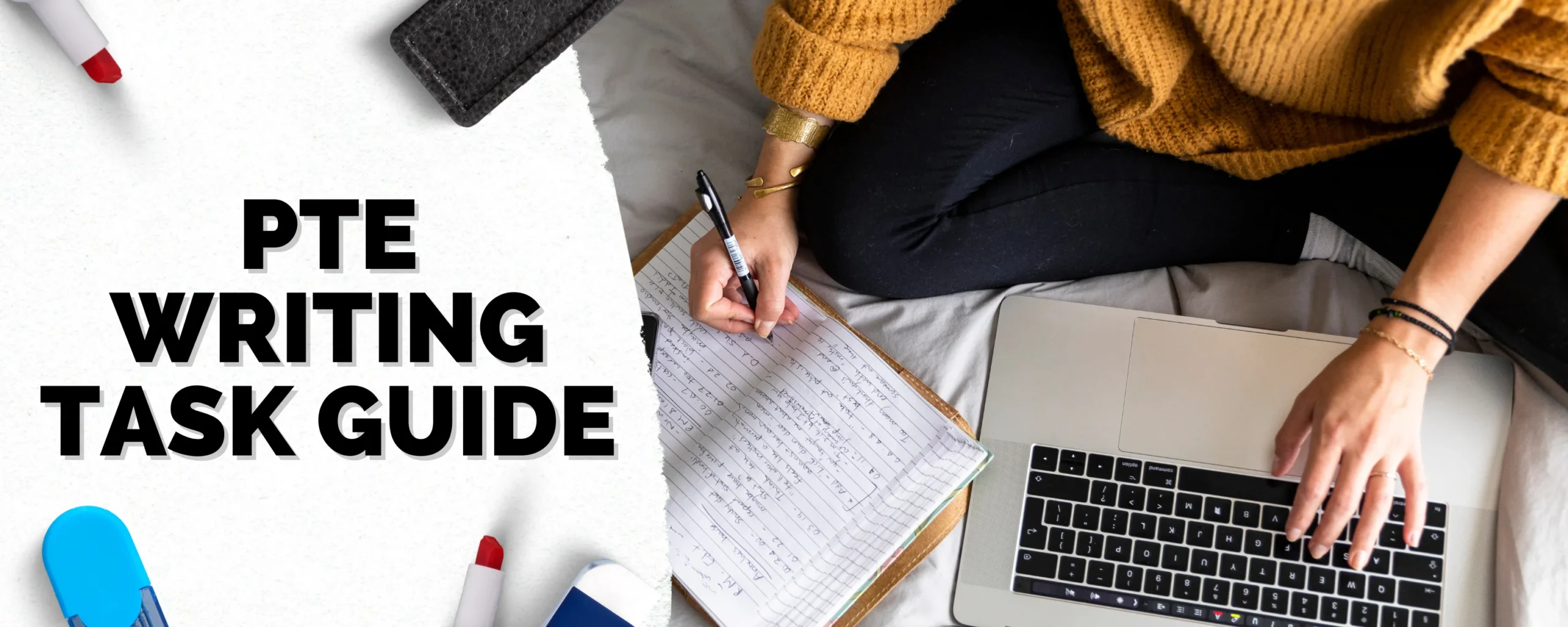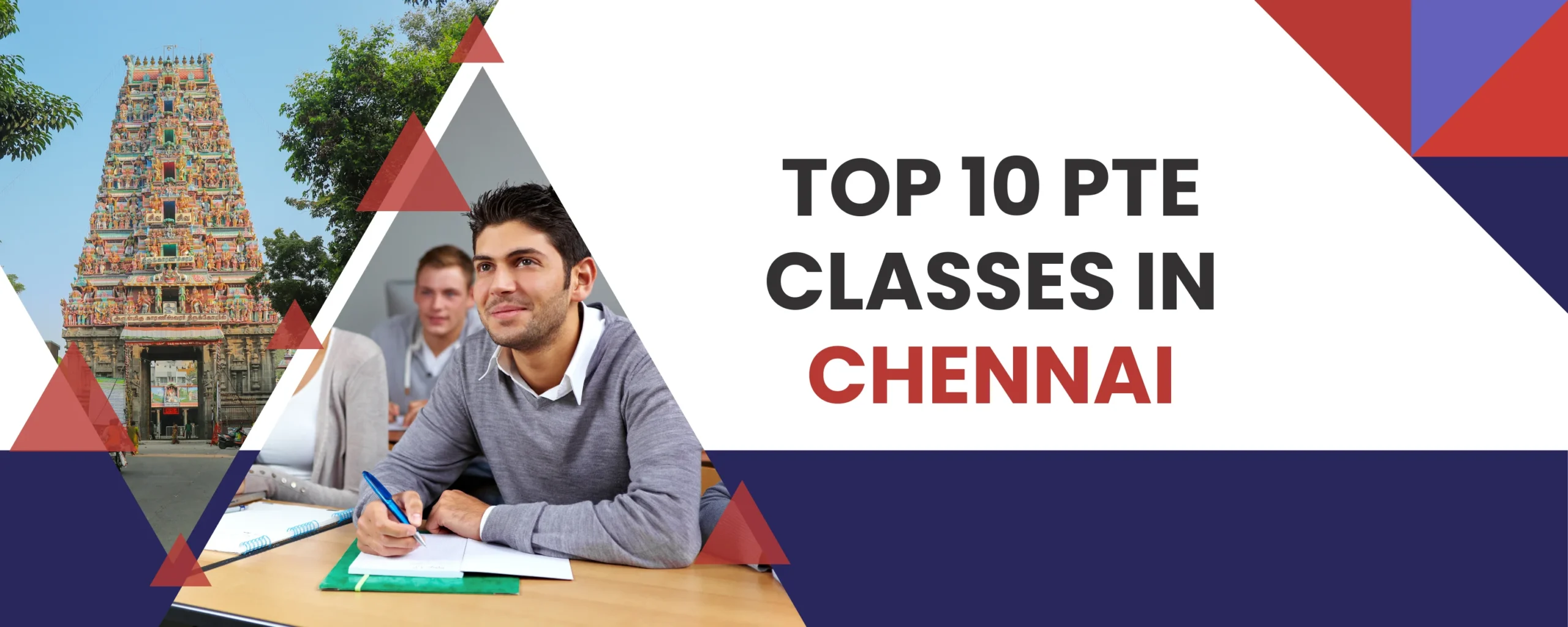The PTE (Pearson Test of English) Reading section, lasting 29 to 30 minutes, is a vital part of the PTE Academic exam, designed to assess your ability to comprehend and interpret written English.
You will encounter 13 to 18 questions across five types: Reading and Writing: Fill in the Blanks, Multiple Choice, Multiple Answers, Re-order Paragraphs, Fill in the Blanks, and Multiple Choice, Single Answer. This section evaluates both independent and integrated reading skills.
The importance of the reading section lies in the fact that many institutions require a specific reading score alongside the overall PTE score.
Achieving a high score in this section is crucial for those pursuing academic, immigration, or professional goals. It demonstrates your proficiency in understanding and synthesising information from texts of varying complexity, which is essential for success in an English-speaking environment.
PTE Reading Exam Sections Format
The listening section of the PTE Academic test is designed to assess your ability to understand spoken English in various formats. This part of the test lasts 30 to 43 minutes and includes eight different question types.
- Each task is based on audio or video clips that play automatically, and you only hear each clip once. You are allowed to take notes during this section.
- The first task, Summarise Spoken Text, requires you to listen to a recording and write a 50–70 word summary within 10 minutes. The prompt length for this task is 60–90 seconds, and it evaluates both your listening and writing skills.
- The Multiple Choice, Multiple Answers task involves listening to a 40–90 second recording and then answering a multiple-choice question with more than one correct response. This task assesses your listening skills and requires you to select all the correct answers from the list provided.
- In the Fill in the Blanks task, you listen to a 30- to 60-second recording and then complete a transcript by typing the missing words. This task tests both your listening and writing abilities, and you can take notes while listening to the audio.
- The Highlight Correct Summary task involves listening to a 30- to 90-second recording and selecting the paragraph that best summarises the recording. This task assesses both your listening and reading skills, with only one correct response.
- For the Multiple Choice, Single Answer task, you listen to a 30-90 second recording and answer a multiple-choice question with only one correct response. This task focuses on your listening skills.
- The Select Missing Word task requires you to listen to a 20–70 second recording and select the word or group of words that completes the recording from a list of options. This task tests your listening skills and involves identifying the correct word that was replaced by a beep sound in the recording.
- In the Highlight Incorrect Words task, you listen to a 15–50 second recording while reading a transcript that contains errors. You need to identify and select the words in the transcript that differ from what is said in the recording. This task assesses both your listening and reading skills.
- The Write from Dictation task involves listening to a 3-5 second recording of a sentence and typing the sentence into the response box. This task evaluates your listening and writing skills, and you can take notes while listening to the audio.
Overall, the listening section of the PTE Academic test evaluates your ability to understand and respond to spoken English in various formats, ensuring a thorough assessment of your listening skills.
Check out our tips on: PTE Listening
Check out our tips on : PTE Writing, PTE Speaking
Common Challenges in PTE Reading Exam
1. Managing Time Effectively While Dealing with Long and Complex Texts
Test takers often struggle to allocate enough time to read and understand lengthy and complex passages, leading to rushed answers and lower accuracy.
To overcome this challenge, it’s beneficial to practise time management techniques like skimming and scanning, which allow quick identification of key information and a focus on understanding main ideas instead of getting overwhelmed by details.
2. Understanding and Analysing Academic and Non-Academic Texts
Many find it challenging to apply effective strategies such as skimming, scanning, and summarising to grasp the main ideas and details in diverse types of texts.
Enhancing reading comprehension skills through regular practice with various types of texts, using note-taking techniques to highlight important information, and practising summarising passages can significantly improve analysis skills.
3. Identifying Key Information and Main Ideas Within the Text
Test takers face difficulty pinpointing essential details and central themes, affecting their ability to comprehend the passage fully.
To improve comprehension, focus on identifying topic sentences, headings, and keywords to extract key information. Additionally, practising paraphrasing the main ideas can reinforce understanding.
4. Handling Unfamiliar Vocabulary and Technical Language
Encountering unfamiliar words and technical jargon in texts makes understanding and answering questions accurately more challenging.
It’s helpful to develop vocabulary through regular reading and vocabulary-building exercises, use context clues to infer the meanings of unfamiliar words, and consult dictionaries or glossaries for clarification.
5. Differentiating Between Factual Information and Opinions or Interpretations
Distinguishing between objective facts and subjective interpretations within texts is crucial but can be tricky, affecting the accuracy of answers. Develop critical reading skills by evaluating sources, identifying biases, and cross-referencing information to help distinguish between facts and opinions.
6. Recognizing the Purpose, Tone, and Style of Various Types of Texts
Understanding the underlying purpose, tone, and style of different texts requires a detailed approach, posing a challenge for test takers.
Familiarising oneself with different genres and styles of writing, paying attention to language cues indicating tone and purpose, and practising analysing passages can aid in recognizing the purpose, tone, and style effectively.
Effective Reading Strategies to Excel in PTE Reading Exam
1. Master Skimming and Scanning
Learn to skim for main ideas and scan for specific details by quickly scanning headings, subheadings, and topic sentences. Practise this technique to efficiently locate key information in reading passages.
2. Identify Key Information
Focus on identifying keywords, topic sentences, and main ideas while reading passages. Highlight or underline important details to refer back to when answering questions to ensure accuracy.
3. Answer Questions Accurately
Carefully read the question prompts and refer back to the passage to find evidence supporting your answers. Avoid making assumptions and rely on information directly stated in the text for precise answers.
4. Use Context Clues
Pay attention to context clues within the passage to understand the meaning of unfamiliar words or phrases. Look for surrounding information that helps clarify the context and purpose of the text.
5. Practise Active Reading
Engage with the text by asking questions, making predictions, and summarising key points as you read. This active approach enhances comprehension and retention of information.
6. Develop Vocabulary
Regularly expand your vocabulary by reading a variety of texts and noting down new words. Use context and word roots to infer the meanings of unfamiliar words encountered during reading tasks.
7. Analyse Model Answers
Study model responses to understand how successful readers extract key information and structure their answers logically. Learn from their approach to effectively convey understanding and reasoning in response to reading prompts.
8. Practice with Sample Tasks
Utilise practice materials with sample reading tasks to familiarise yourself with different question types. Analyse model answers to grasp effective strategies for answering comprehension questions, matching headings, and summarising written text.
Practice Resources for the PTE Reading Exam
To integrate reading practice into your daily routine for PTE preparation, allocate focused time each day for reading materials relevant to the exam. Use active reading techniques like summarising and note-taking to enhance comprehension.
Vary your reading topics to cover a range of subjects and styles, mimicking the diversity of passages in the PTE Reading section. Consistency in practice will help improve reading speed, vocabulary, and overall performance on the exam.
Utilise the following resources to enhance your PTE Reading Exam Preparation
1. Online Sources
The Pearson PTE Official Website provides free practice materials, including sample questions and tips for each section. Edulyte offers customised PTE training with access to various resources and sample papers.
Books such as the Official Guide to PTE Academic, Barron’s PTE Academic, and PTE Academic Expert are highly recommended for comprehensive practice.
2. Online Platforms
The Official Pearson Mock Test and PTE Academic Official Practice App are valuable tools for assessing your readiness and practising on-the-go. These platforms streamline your preparation process and provide targeted practice for optimal performance on exam day.
How La Forêt’s PTE Courses Help
Our course offers an overview of reading strategies and techniques tailored for success in the PTE exam. Explore our recommended reading materials and practice tests to enhance your reading skills.
We provide guidance on integrating reading practice into your daily study routine for optimal improvement. With personalised guidance and time-saving techniques, you’ll be well-prepared to tackle reading tasks effectively and achieve your desired score.
Wrap Up
Don’t wait—enrol in our comprehensive PTE course today!
Enhance your PTE reading skills and ace the test! Get started with a free reading assessment test or practice session to kick-start your preparation.





